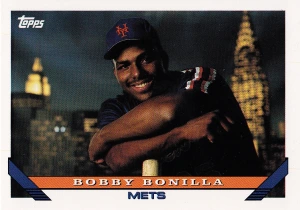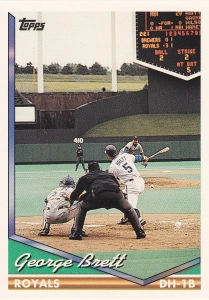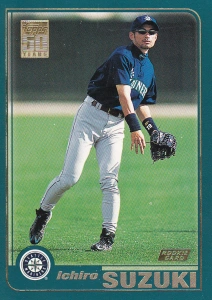I finished up a few 2016 Topps Archives inserts from my Black Friday COMC purchase and I’m finally getting around to posting them! There were 2 sets that were “low hanging fruit” of that release and I got the Francona Father-Son card to finish this bad boy up.
Info about the set:
This slideshow requires JavaScript.
Set description: One of two 1985 subsets that were recreated in 2016 Topps Archives, the father/son cards from 1985 were numbered 131-143 in the original 1985 Topps set. You have the Dad with one of their original cards here and the son with a more recent picture.
Set composition: 7 cards, 1:12 (2016 Topps Archives)
Hall of Famers: 3 – Roberto Alomar, Ken Griffey Jr., Tony Perez
1 Father, 2 Sons – and it’s likely the junior Tito will make it a 4th guy and a 3rd son someday for his exploits as a manager.
Also, with that list, it’s hard not to think of the Griffey trade to the Reds where Tony would not let Griffey Junior wear his retired #24 for the Redlegs. I don’t blame him, it was just always interesting. I think it was a combination of Tony (correctly) never felt like he got his due soon enough and he and Griffey senior just weren’t that close.
How I put the set together:
Card that completed my set: #FS-FF – Tito and Terry (Tito) Franconas

I picked this card up on COMC last Black Friday. Someday COMC will start shipping cards again!
Thoughts on the set: I always love a throwback to 60’s, 70’s or 80’s subsets! I think the execution could have been better – see my comment on Alou’s and Boone’s throughout. They could have made this a 15-20 card set with some minor contractual additions, and a 10 card set by just including some guys they already had elsewhere in the product!
Best card (my opinion): #FS-AAL, #FA-AL – the Alomars

I’m gonna cheat and go with 2 cards here. The cards that have the same dad get the nod, it’s pretty damn rare to have two sons be All-Stars in the majors. If Topps had included both Boone brothers I’d have gone with 4 best cards!
My Favorite Reds card: the Griffey card has Senior with his 1980 Reds card, but even though I named my card Griffey, you have to go with the one that has 2 Reds on the card!!!

Any other tidbits: There is one duplicate here – Terry and Tito Francona are in the 1985 subset and the 2016 Archives card. The really cool one is the Boone boys. Ray and Bob Boone have a card in 1985, whereas Bob switches over to the left side in 2016 and his son Bret comes in on the right. Sandy Alomar appears on 2 cards with both of his sons – something I wish Topps had done with Aaron Boone.
One thing kind of frustrating with this insert – there are 7 cards in the regular set but 8 in the autograph set. Topps printed a card of Felipe and Moises Alou, but then they didn’t make a regular, non-auto version. Kind of frustrating – since the autos are only numbered to 10, that’s a damn hard card to come by. I’d consider getting it if it was a more normal autograph, just to augment the set. But out of 10? I’m not paying $50 to $100 for it.

























